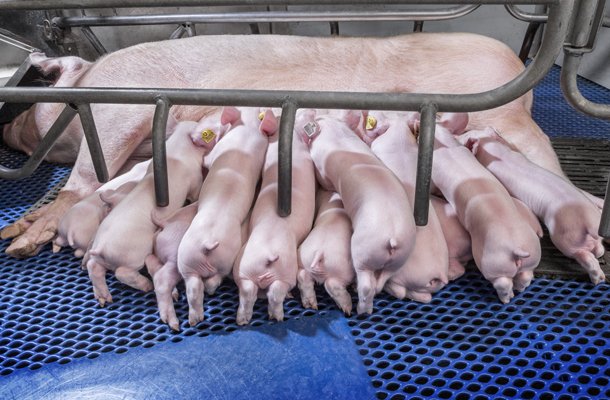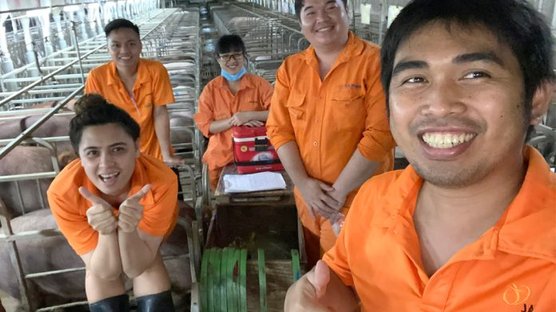
Published on Oct. 30, 2018
Swine Industry Takes Dead Aim at Sow Mortality
When it comes to key measures like number of litters, total born, and piglets weaned, the swine industry is always seeking ways to get more for less.
Sometimes, though, “less is more”, which is why some companies are taking aim at reducing another key performance indicator: sow mortality.
In North America, sow mortality has become a much bigger issue in recent years
Lost Sows = Lost Opportunity
While sow mortality was consistently in the 5 – 8 per cent range in North America for many years, more prolific animals have caused that rate to almost double. Some statistics show sow mortality around 10 -12 per cent on average, with some individual farms running at 14 -17 per cent. Even at 10 per cent, on a farm with 5000 sows, that amounts to a large lost opportunity.
Of course, this is far from just a North American problem. In Europe, sow mortality has increased from a low of 3 per cent three decades ago to current levels of 8 – 9 per cent in Spain, 10 per cent in other European countries and some reports of 15 per cent in Denmark.
Not surprisingly, mortality directly impacts profit. Sow mortality increases non-productive sow days on the farm, decreases farrowing rate and increases production cost per weaned piglet.
“The cost of a dead sow depends on timing,” says José Ángel Pedrido Rey, Customer Services Manager – Spain and Portugal with Hypor. “If a sow dies during gestation, you have fed and housed her each of those days and you are not able to recoup those costs because there is no opportunity to sell her piglets. The later in gestation, the more money is lost. Depending on the country, producers may also have to pay a disposal fee for the sow, and these costs must be considered in addition to the cost of replacement gilts when determining the true economic impact of sow mortality.”
As well, there can be a “reputation cost” tied to high sow mortality in terms of impact on consumer perception that can ultimately lead to lower pork consumption.
Fortunately, when it comes to the question of how to have low sow mortality, Hypor has the answer.
Balanced approach is good for your balance sheet
“The Libra* has about 5 -7 per cent sow mortality because we don’t engage in single trait selection,” says Meyer. “Some companies place a lot of emphasis on a particular trait like born alive, and if you only select for that, eventually you will get it. In the process, though, you give up something in return. Our balanced approach to trait selection lets us maintain excellent sow longevity along with larger litters, better feed conversion and many other elements.”
That commitment to balance holds true on both sides of the ocean for Hypor.
“The Hypor Libra* is a balanced sow,” says Pedrido Rey. “One of Hypor’s main focuses in breeding selection is the stayability. We produce sows with high longevity on the farm and the capacity to remain for more reproductive cycles with strong production numbers.”
That balance is critical for producers, as “pigs weaned per lifetime per female” is an essential line item in your list of performance measures, and for good reason. If a sow is weaning fewer pigs over her lifespan due to mortality, it makes you less profitable. For example, take two sows side-by-side, one weaning 45 pigs per lifetime and the other 60. With more pigs weaned per lifetime, the sow is staying in the herd longer, increasing the return on investment from when she was purchased as a gilt.
Fortunately, large losses due to sow mortality are not an issue for Hypor clients.
“Our clients don’t have a problem with sow mortality, and it’s a big plus when talking to potential clients as well,” says Meyer. “We look at their current genetics, the mortality rate they’re experiencing, and compare that to Hypor, and the result can often help them in deciding to change their existing program.”
The same holds true in Europe, where, taking into account different mortality levels among countries, Hypor is about 3 per cent below the European average.
Total System Profitability
By choosing the Hypor Libra*, producers avoid the many pitfalls that accompany sow mortality. Even a culled animal can be sold and generate some revenue, but dead sows simply don’t make you money. Add to that the extra labor costs and expense of a replacement female – around $250 - $300 U.S. or €225 - €260 – and it’s clear how high sow mortality can be deadly for your bottom line.
In crunching the numbers, producers may try to balance the financial impact of sow mortality against other traits like farrowing rate and piglet survival. If you’re wrestling with that dilemma of which trait to focus on, and realizing that picking one over all the others will still be bad for business, your choice is clear: Choose the Hypor Libra*.



